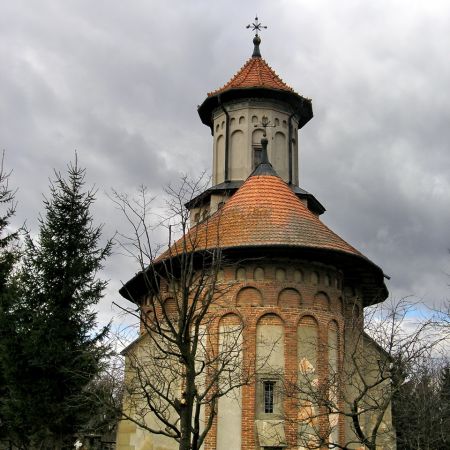This is one of the churches founded by the legendary Stephen the Great, one of the most important figures in the history of Romania, and the building was completed in 1488, when this was one of the largest places of worship in the region, not far from the town of Suceava itself. It is fascinating to see how the rules of Orthodox painting were used here, turning the church into a small museum, several centuries old.
The original decorations and frescoes were finished in the times of Stephen the Great, and the compositions will be restored only in the 17th century, when the structure itself was strengthened. The first characteristics of the complex were thus conserved and are still impressive examples of early sacred architecture. Maybe the most interesting work of art, interesting both for painters and historians, is the large representation of the founder, Stephen the Great, together with his family, one of the few images still in existence, although at one time it was severely damaged and could used some restoring.

In the beginning of it's long history, the place was also a monastery, and a rich one, as over the decades a whole village was actually built around it. The monastery was closed down around 1783 by the Austrian authorities, and unfortunatelly much of it's treasures and art were lost, and the damages were severe. According to the notes of those times, most of the damages were done by Polish troops, as well as the Turks, who pillaged and destroyed much of the villages and places of worship in the region. The 18th century was a short time of peace, and despited the closing down of the monastery, the church remained in service and it wasn't long before it gained a great popularity.
After a fire and some ravages due to the passing of time, it was once again restored in the 19th century, when it was surrounded with a sturdy wall, the bell-tower was redone, some interior and exterior decorations were repainted or restored, and the church gained the appearance which can be seen today. It's architecture follows the traditional style which can be found on many churches and monasteries of Moldova, with rich interior and exterior decorations and paintings, wonderful and very precious sacred objects and an impressive altar. The original paintings on the inside were made in 1522 - 1526, thus long after the death of the founder, and it is unusual for a church to remain that long without interior frescoes.
Following the Church's traditions and rules to the smallest detail, these are astounding examples of medieval traditional painting, with rich, vibrant colours, a special attention given to detail and figures, wonderful drawings, a certain naïve art feeling. The subjects are taken from Biblical and traditional sources, and believers could see scenes such as The Last Judgement, the Crucifixion, moments from the life of Jesus, the Holy Mother, God and the Holy Spirit, Heaven and Hell, rewarding the worthy and punishing the sinner, several portraits of Orthodox saints - among them Stephen the Great - moral examples of living.
The place was also an important cultural centre, and many of the manuscripts and religious books which were kept here are now housed inside prestigious libraries and museums in the country.
This church, although not as popular as others founded by Stephen the Great, is surely one of the most interesting and beautiful in the region of Suceava, and is worth a visit anytime.

































